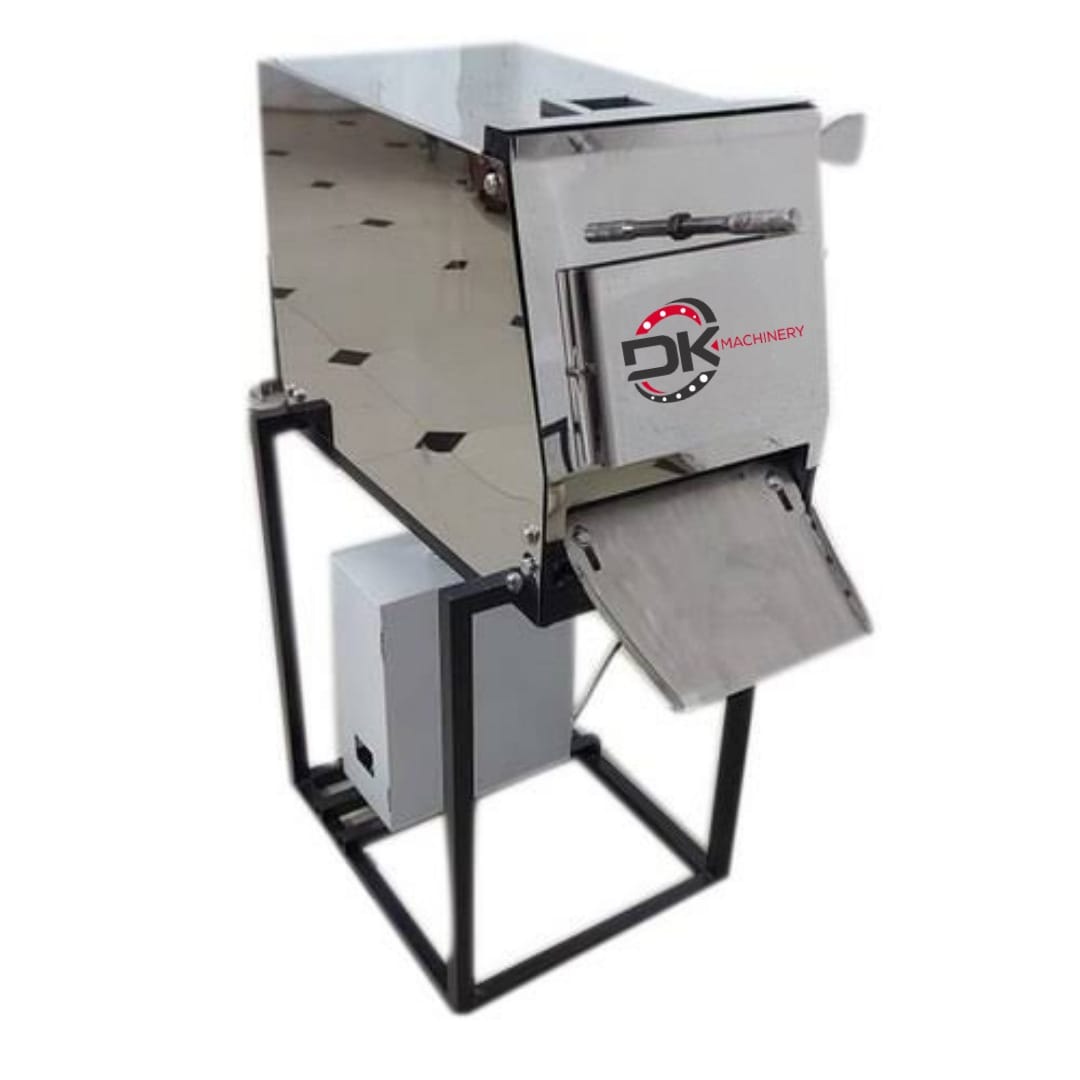Roti (Chapati) Pressing Machine (Premium) RP-1 1000 (P/Hr.)
Roti (Chapati) Pressing Machine (Premium) RP-1 1000 (P/Hr.)
Introducing the Roti (Chapati) Pressing Machine – Chapati pressing machinery comes in various sizes and capacities to cater to different production needs. When selecting one for your business, consider factors like production volume, available space, and budget. Additionally, it’s important to provide proper training to operators to ensure safe and efficient operation.
₹75,000.00 ₹70,000.00
Additional information
| Model No. | RP-1 |
|---|---|
| Motor | 1 H.P. (Single Phase) |
| Power Supply | 220-230 V |
| Warranty | 1 Year |
| Coating Plat | Teflon |
| Gear Box | Standard Make |
| Electric Parts | Standard Make |
| Size Adjustable | 2 inch to 11 inch |
| Body Cover | Stainless Steel 202 |
| Production Capacity | 1000 KG (P/Hr.) |
| Power Consumption | 1.5 to 2 Unit (P/Hr.) |
| Electric Connection Load | 4 H.P. |
| Thickness Adjustable | 1 mm to 2 mm |
| Color | Silver |
| Size | 24" x 18" x 16" (L*W*H) |
| Capacity | 1000 (P/Hr.) |
| Weight | 120 KG |
| Usage/Application | Commercial |
| Place | Made in India |
Product Description
Introducing the Roti (Chapati) Pressing Machine – Chapati pressing or roti making machinery is a type of equipment designed to automate the process of making chapatis or rotis, which are traditional Indian flatbreads. These machines are commonly used in commercial kitchens, restaurants, and food production facilities to streamline the chapati-making process and increase production efficiency. Here’s an introduction to some key features and components of chapati pressing machinery:
- Pressing Mechanism: The pressing station is where the magic happens. A hydraulic or mechanical system is used to flatten each dough ball into a thin, round chapati or roti. The pressing plates are often heated to cook the chapati partially during this process.
- Cooking: Some advanced chapati making machinery may include a cooking component, where the pressed chapatis are further cooked or baked to ensure they are fully done.
- Stacking and Collection: The finished chapatis are stacked and collected for packaging or immediate consumption. Conveyor belts or trays are commonly used for this purpose.
- Control Panel: Chapati making machinery usually comes with a control panel that allows operators to adjust settings like dough thickness, cooking time, and temperature. This ensures that chapatis meet desired quality standards.
- Cleaning and Maintenance: Proper cleaning and maintenance are essential to keep the machinery running efficiently and hygienically. Regular cleaning schedules and routine checks are important.
Benefits of Chapati Pressing Machinery:
- Increased Production: These machines can produce chapatis at a much faster rate than manual methods, making them ideal for high-volume production.
- Consistency: Chapati pressing machinery ensures uniform size and thickness, resulting in consistent product quality.
- Labor Savings: Automation reduces the need for manual labor, which can lead to cost savings.
- Hygiene: Modern machines are designed to meet hygiene and food safety standards, minimizing the risk of contamination.
- Customization: Some machines offer settings for different chapati sizes and thicknesses to meet varying customer preferences.
